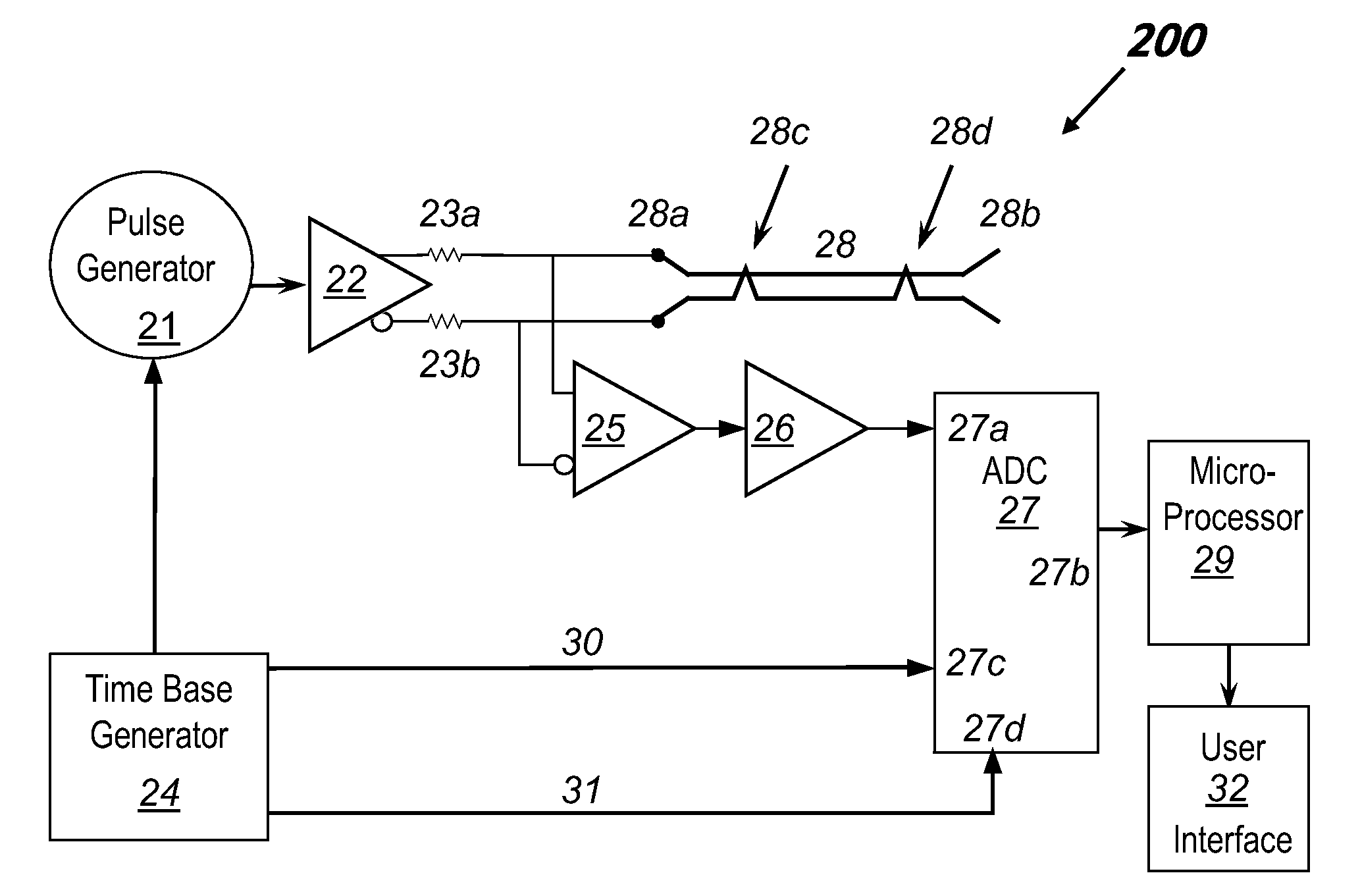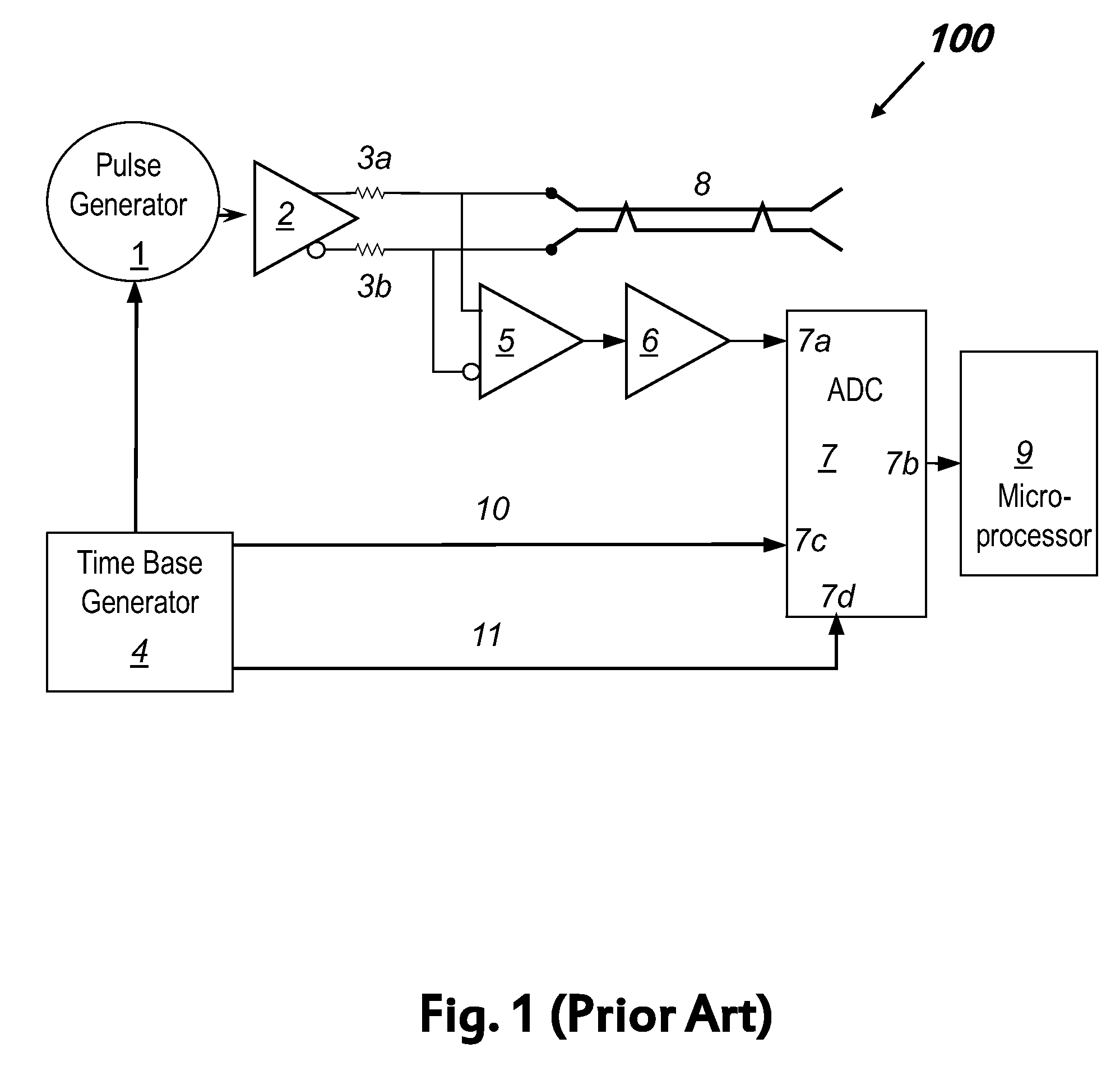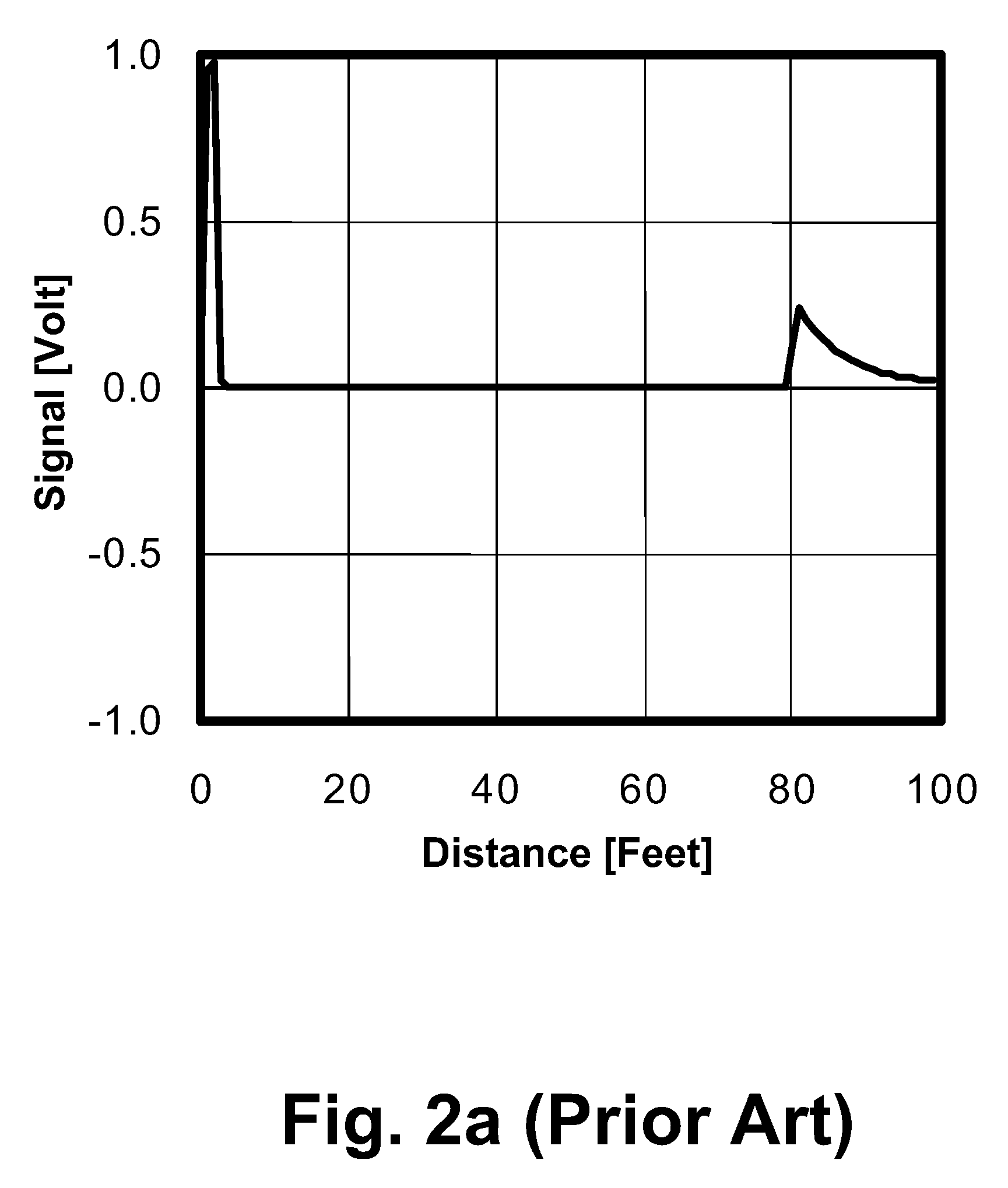Adaptive pulse width time domain reflectometer
a time domain reflectometer and pulse width technology, applied in the field of time domain reflectivity (tdr) methods, can solve the problems of increasing the difficulty of telephone technicians to discriminate, the difficulty of detecting anomalies, and the communication lines or cables that work sufficiently well for standard telephones do not always work well for different types of dsls. achieve the effect of improving the user interface of acquired data, reducing the number of gain and distance ranges
- Summary
- Abstract
- Description
- Claims
- Application Information
AI Technical Summary
Benefits of technology
Problems solved by technology
Method used
Image
Examples
Embodiment Construction
[0041]To address the problems associated with prior art time-domain reflectometer (TDR) techniques, the present invention is based on a modified Step TDR 200 shown in FIG. 5. A pulse generator 21 is used to generate one or more launch pulses with a pulse width ranging from about 10 nanoseconds up to a millisecond or more.
[0042]For balanced lines as in a telephone system, the pulse generator 21 differentially drives the cable under test 28 with a differential output line driver 22 through a pair of impedance matching resistors 23a, 23b. A differential launch pulse is injected at a start time into the near-end 28a of the cable or line under test 28, where it propagates towards the far-end 28b. Any faults in the form of impedance discontinuities 28c, 28d will cause a reflected wave that will arrive back at the near-end 28a as a return voltage signal, where it is received by an input of a differential receiver 25 at an arrival time subsequent to the start time depending on the location ...
PUM
 Login to View More
Login to View More Abstract
Description
Claims
Application Information
 Login to View More
Login to View More - R&D
- Intellectual Property
- Life Sciences
- Materials
- Tech Scout
- Unparalleled Data Quality
- Higher Quality Content
- 60% Fewer Hallucinations
Browse by: Latest US Patents, China's latest patents, Technical Efficacy Thesaurus, Application Domain, Technology Topic, Popular Technical Reports.
© 2025 PatSnap. All rights reserved.Legal|Privacy policy|Modern Slavery Act Transparency Statement|Sitemap|About US| Contact US: help@patsnap.com



